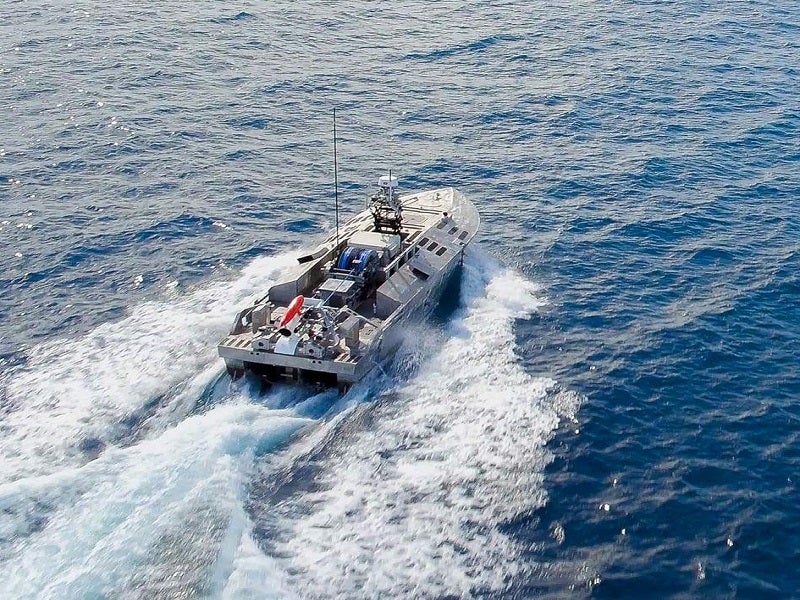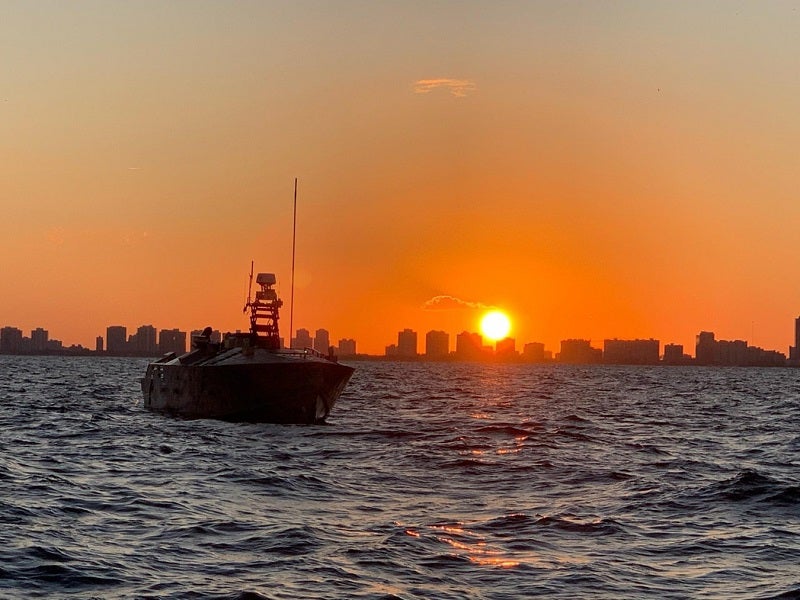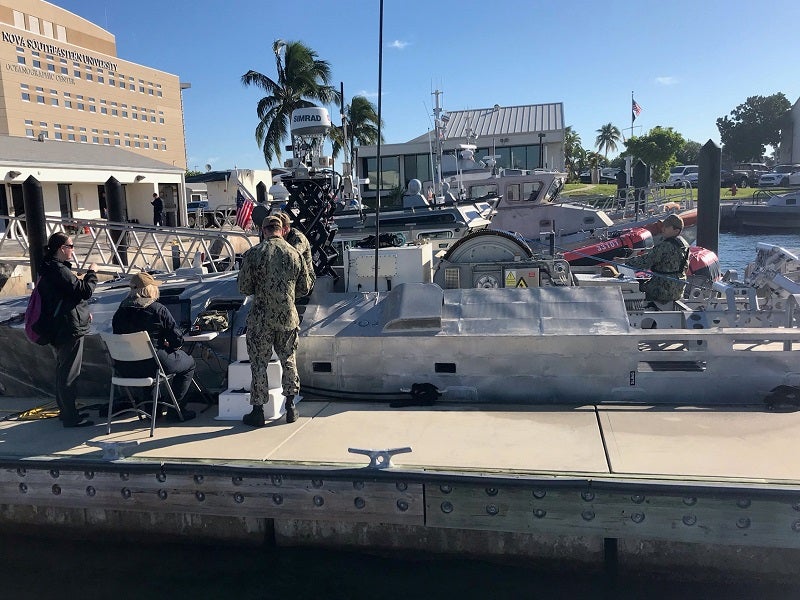The Unmanned Influence Sweep System (UISS) is a self-propelled, semi-autonomous surface vessel developed by Textron Systems for the US Navy. The system is part of the US Navy’s suite of mine countermeasure technologies and can be deployed to acoustically and magnetically sweep naval mines.
Textron Systems received an initial engineering, manufacturing and development (EMD) contract worth $33m to provide a solution for the UISS USV programme based on its Common USV (CUSV) platform in October 2014. The contractual scope included the design, development and qualification of the UISS system.
The US Navy awarded an additional contract for two more vehicles in 2017. Delivered in 2018, these vehicles were procured for the mine countermeasures unmanned surface vehicle (MCM USV) programme, which leverages the UISS for mine hunting, mine neutralisation, and mine sweeping.
Unmanned Influence Sweep System development and testing
The developmental testing and operational assessment of the UISS was completed off the coast of South Florida in November 2019. As part of the testing, the system was evaluated through minesweeping missions conducted against simulated targets using the Navy Instrumented Threat Targets (NAVITTARs) training system. The initial integration tests with the littoral combat ship (LCS) and vessels of opportunity were also completed.
The unmanned vessel underwent underwater explosion shock testing in January 2021, with the objective of evaluating the survivability and performance of the UISS in hazardous environments.
The UISS achieved Milestone C approval in February 2020 which facilitated the programme’s transition to the low-rate initial production (LRIP) phase. The US Navy ordered three UISS systems under the LRIP contract, followed by an additional system under a contract modification in April 2021.
The initial operational test and evaluation (IOT&E) phase of the UISS was completed in August 2021. During this phase, the ship-based testing was conducted onboard the USS Manchester (LCS 14) off the coast of California. It included end-to-end minesweeping missions conducted against NAVITTARs and a demonstration of the compatibility of the UISS with the LCS.
Design and mission capabilities
The UISS is designed to be integrated with the LCS as part of the mine countermeasures mission (MCM) package. The system includes an MCM USV, an unmanned surface sweep system (US3), and a sensor package.
The MCM USV is expected to replace the US Navy’s ageing Avenger-class minesweeping ships and MH-53E Sea Dragon helicopters. The all-aluminium surface vessel can be launched from either shore or the LCS and vessels of opportunity.
The US3 includes a magnetic field generator, an acoustic generator, a power system, and other associated equipment. The UISS will provide an unmanned, off-board minesweeping capability in littoral areas. It is designed to enable mine clearance in sea lanes, fleet operating areas, straits, choke points, and amphibious objective areas.
Payloads aboard Unmanned Influence Sweep System
The UISS carries a range of sensors to sweep magnetic, acoustic, and magnetic-acoustic combination mine types. It can be fitted with payloads such as side-scan sonar, non-lethal weapons, mine neutralisation, and intelligence, surveillance, and reconnaissance (ISR) sensors.
The system contains an MCM USV integrated with towed minesweeping payload. The MCM vessel is expected to carry payload delivery systems (PDS) for mine sweeping, mine hunting, and mine neutralisation. It can tow a modified Mk-104 acoustic generator and a magnetic minesweeping cable.
The MCM package includes Raytheon’s AN/AQS-20C sonar comprising two side-facing sonars, a gap filler sonar, and a forward-looking sonar. The AN/AQS-20C sonar supports mine hunting operations through its advanced acoustic and electro-optic sensing capabilities. It can simultaneously detect, localise and classify bottom, moored, close-tethered and volume-moored mines.
An electro-optic identification device is fitted on the towed sonar to help identify bottom mines. A winch system is used to deploy the towed sonar. The sonars enable the detection of mine-like objects from the seafloor to near surface in a single pass.
Northrop Grumman’s AN/AQS-24B towed sonar provides acoustic images to detect, classify and localise bottom and moored mines. It includes an actively-controlled towed body, an electromechanical tow cable, and electronic systems for signal processing and recording. The towed body includes multi-beam synthetic aperture and side scan sonars.
Command and control of the MCM USV
The MCM USV provides interoperability with the MCM mission package (MP) command and control suite of the LCS via the multiple vehicle communications system (MVCS).
It can be also controlled from shore via the mission package portable computing system (MPPCS) with line-of-sight communication systems.
Propulsion and performance
The UISS USV is driven by a diesel engine. The vessel has a maximum range of 140km and can endure at sea for more than 20 hours. It has a towing capacity of about 4000lb (1,814.36g) while travelling at a speed of 20kt.






